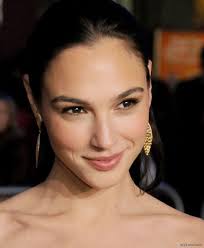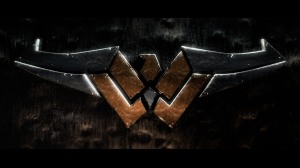
I’m tired of reading excuses from Warner Bros. and DC about how hard it is to adapt Wonder Woman to screen. Now that Gal Gadot has been cast to play the character in the 2015 Batman vs. Superman movie, surely her own feature is in the works? It’s not a hard movie to make. Here’s how you do it.
The first obstacle is generic. Most superhero movies are two stories: the origin and a monster-of-the-week. The hero completes his identity arc with the arrival of a new menace in act two, and so defeating the menace in act three completes that act two plot while ignoring act one. What, for example, does a lizard-man menacing New York have to do with a radioactive spider bite? Batman Begins solves the problem by linking the defeat of the act three menace to the act one origin: Liam Neeson trains and then battles Christian Bale.
This challenge is bigger for Wonder Woman because the origin and the menace are already linked. Nazi Germany is her reason to be, but punching out Adolf in his act three bunker is a lousy ending. Her American flag of a costume deepens the World War II link, making an origin update clumsy. And yet you need her in our current time period by the end of the film or no Justice League tie-in. Captain America presented the same problem, so Marvel threw in a suspended animation twist in the framing scenes. They also replaced Adolf with the Red Skull and inserted him into the origin story as a fellow super soldier, solving the monster-of-the-week problem too.
Wonder Woman needs to land in the 21st century as well, but better to make that leap a plot point rather than an epilogue. That means the origin-triggering menace needs to time travel too. That would be hard except that Wonder Woman’s Amazonian home provides the ready-made solution. Paradise Island is hidden in the Bermuda Triangle, a location legendary for such unexplained phenomenon as disappearances and time anomalies.
I recommend a plane carrying a German A-bomb.
Begin with Wonder Woman’s future love interest, Captain Steve Trevor, stowed inside one of two Nazi bombers on their way to incinerate New York. Steve overpowers the crew, seizes control of the plane, and exchanges fire with the other bomber, sending both tailspinning into the mysterious storm clouds of the Bermuda Triangle. When he comes to, he’s on Paradise Island—where he spends the rest of act one until he and Wonder Woman fly off in her magic plane (it starts out a as chariot and winged horses before taking the form of the downed bomber). Meanwhile, modern day scuba divers discover the remains of the second bomber and the still functional A-bomb inside. As a result, when Wonder Woman and Steve emerge from the protective clouds surrounding Paradise Island, they’re not in 1944 anymore. The Triangle (or possibly unseen Hera?) has flung them forward in time to continue Steve’s mission—because the terrorists of your choice (I’m picturing an American-grown Aryan militia) now has its hands on that A-bomb.
But back to the problematic Wonder Woman costume. Why exactly is an Amazonian princess of Greek antiquity dolled up in the American flag? That’s easy. Back in scene one, after a pan of the menacing A-bomb inside the first plane, a German soldier pauses to look down at something he’s stepped on: an American girlie magazine open to a centerfold. As he picks it up and rotates the page, Trevor clocks him over the head from behind, step one in his seizing the plane. It’s a quick gag that will appear to stand-alone—until the Amazonian Queen produces the magazine after agreeing to aid him. They have studied it in order to tailor an outfit that will allow Wonder Woman to blend. In she steps wearing the pin-up girl’s bustier, micro-skirt, and stiletto boots—only in the colors of the flag Steve said represented his cherished homeland. (His subsequent protests go unheeded.)
I’m skipping over much of the fun of act one (Steve among those wacky Amazons), as well as act two (Wonder Woman and Steve among those wacky 21st century Americans), to focus on a bigger problem. Wonder Woman is aloof and off-putting. No other superhero is quite so alien. Not only is she an immortal demigoddess princess, but her mother sculpted her out of magic clay. Even Superman, an actual alien, is a homegrown farm boy at heart. Bruce Wayne, Peter Parker, Tony Stark, they all have flavors of relatable humanness. Thor is the closest equivalent, but he’s male. A majority of the superhero ticket-buying demographic already think women are alien. Wonder Woman is alien squared.
So embrace that weirdness. Make it her character arc. She starts out a bit like Data on Stark Trek—powerful, brilliant, yet oddly clueless too. She’d never seen a man before, and now that she has, she’s not particularly impressed. But she’s curious and comically off-putting in her attempts to interact—all obstacles to overcome in the inevitable marriage plot of act two. Once thrown into the mutually alien territory of 21st century America, she and Steve only have each other. By the time they’ve thwarted the A-bombing Aryans in act three, they’ll have earned their falling action kiss, possibly more.
The story is her growing humanity. Maybe some of that aloofness was an act. She’s seen men before. And her mother didn’t really mold her from magic clay—her mother escaped pregnant from the war lord who enslaved her. As far as that island of theirs, it’s not Paradise. It’s just the one rock on the planet where no woman has ever been raped. Of course she was aloof. And that makes her closure of her own marriage plot all the more pleasurable.
The magic lasso has potential too. If Wonder Woman ties Steve up to test the truth of his plea for aid in act one, reverse the situation in act three (a trick James Cameron pulled in both True Lies and The Abyss). But please no bondage references. She strings the lasso around herself to prove a point, to answer a question Steve would never have asked on his own. (Does she love him? She says no. But, he wonders afterwards, does the lasso even work on her?)
There’s tons more, but those are the basics. Plus one warning: Do NOT begin with a voiced-over montage of Amazonian history. It’s boring and distracts from the real story. Anything important we have to pick up with Steve on the island.
Diane Nelson, president of DC Comics, said back in July that Wonder Woman “has been, since I started, one of the top three priorities for DC and for Warner Bros. We are still trying right now, but she’s tricky.” Greg Silverman, Warner Bros.’ president of creative development and worldwide production, was even more vague in October, boldly declaring that “We have been doing a lot of thinking for years” and “everything that has been speculated are things that we’ve thought about.”
With Gadot officially cast, let’s hope they can move past all the tricky speculations and make an actual movie now.



